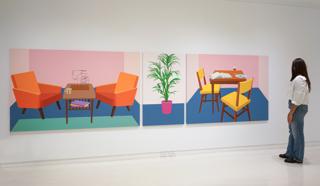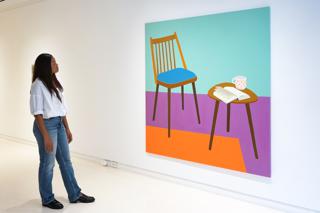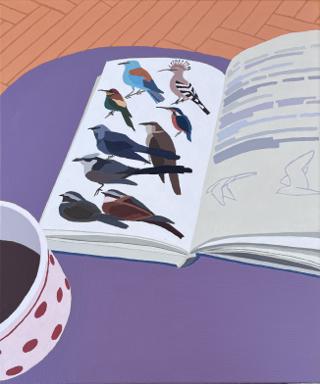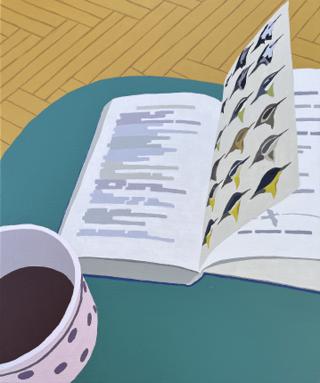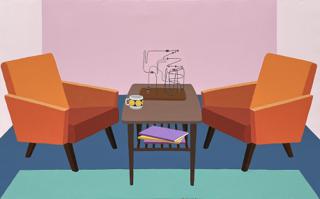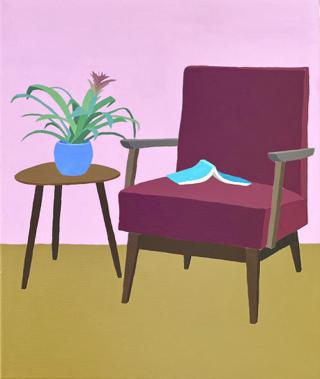Two-person show in New York
2 Oct. 2022
I was pleased to show a selection of new paintings in a duo show with Nick Dawes, curated by Emma Saperstein, Chief Curator at San Luis Obispo Museum of Art. Our exhibition titled Nostalgia was on view from September 9th to October 15th, 2023 at Sapar Contemporary in New York.
Here's the exhibition text:
"Sapar Contemporary is pleased to present Nostalgia: an exhibition of new paintings by Zsofia Schweger (Hungary/UK) and Nick Dawes (UK), and the first project of Dawes’ with the gallery. Underlying both of these two very different practices is a marked sense of nostalgia. For Schweger, this new series of work depicts an escape from the turbulence of the moment, when she left her adult home in London in the middle of the pandemic to return to her childhood home in southeast Hungary. This shift has changed Schweger’s long-established practice of basing her compositions on actual physical spaces she visited or lived in to painting from carefully constructed environments made from collected and familiar objects and furniture. The palpable ephemera of human presence in these paintings - the empty coffee cups, solitary dinner scene, open books - evidence a tension between something complete and something missing. Either someone is about to enter or has just left. Dawes’ paintings, on the other hand, begin with quotidian objects connected to signage - such as street signs that the artist encounters on his walks. The paintings are then abstracted from those objects. Dawes pushes the boundaries of painting by using industrial household paint instead of oil paint, and resisting the grid, and most importantly forgoes the brush, as his paintings are made exclusively by pouring. What is left through these actions of transformation are non-binary layered shapes and colors that approach painting from the other - more nostalgic - side. Together, these diverse works create in the viewer a simultaneously unsolicited, and yet welcome, longing for more.
Dawes combines his interests in High Modernism and 1950s abstract painting in this new series of work. Building on these references, and using an expanded version of watercolor painting, Dawes builds the forms in his work through a series of poured layers that penetrate, diffuse, and run - generating a translucent visual dynamic where solid components dissolve and flow into a vocabulary of fluid entities. Once he has an idea of where the work begins, he starts with small sketches and drawings based on a single word - and as he begins his process the work goes on a journey of transformation, where the starting point of the work and where it ends up are almost unrecognizable. Using the scale of his body, and the canvas itself as a tool, Dawes shapes the forms on his canvases into dynamic and mysterious shapes that seem to surround and encompass the viewer. In this new series, Dawes challenges himself formally - introducing a new, Baroque-influenced color palette, and keeping the paint application a bit thinner - maintaining the idea of transparency at the forefront of the work. Dawes considers his practice just one large body of work - each piece building on its predecessor, adding something new or taking something away, and offering new sensibilities of experimentation with each new painting. In works like Level, leaning on the legacies of post-war abstract expressionist painters such as Morris Louis and Helen Frankenthaler, Dawes welcomes a relaxed playfulness as the shapes dynamically move towards each other and towards us.
Zsofia Schweger’s works presented here are some of the most detailed and narrative of her work to date. For Schweger, the temporary transition of her practice from a London-based studio to a hybrid-domestic space in Hungary marked a distinct shift in her painterly approach. Rather than leaving the marks on her canvases up to chance, Schweger exercises total control over her depicted environments. Working from these new fabricated scenes, for the first time in her practice Schweger is able to physically, in real time, inhabit and interact with the contexts she depicts. Formally, her paintings invite us in using the diagonals of one-point perspective and a very carefully constructed color scheme. There is inherent contradiction in our lived experience of this new body of work, absence and presence, stillness and movement, expansive space and stark flatness, deep feeling and clear apathy, a warm coziness and ominous dread, all elements of both the private and the social. In her large triptych, Schweger takes on a formal challenge of combining three canvases to create one long composition - one that can be rearranged in any combination, or the paintings can be hung separately, on their own. In her largest work of the show, Be Right Back (Feeding the Dogs, Perhaps), Schweger challenges our sense of scale - grossly exaggerating the size of domestic objects - a chair, cup of coffee, open book - to explore how this will feel for the viewer - a sense of domination, of comedy, or immersion.
In their varied investigations of human presence, Schweger and Dawes invite viewers to think about their own autonomy and lived histories, as well as their relationships to everyday spaces, shapes and objects."
